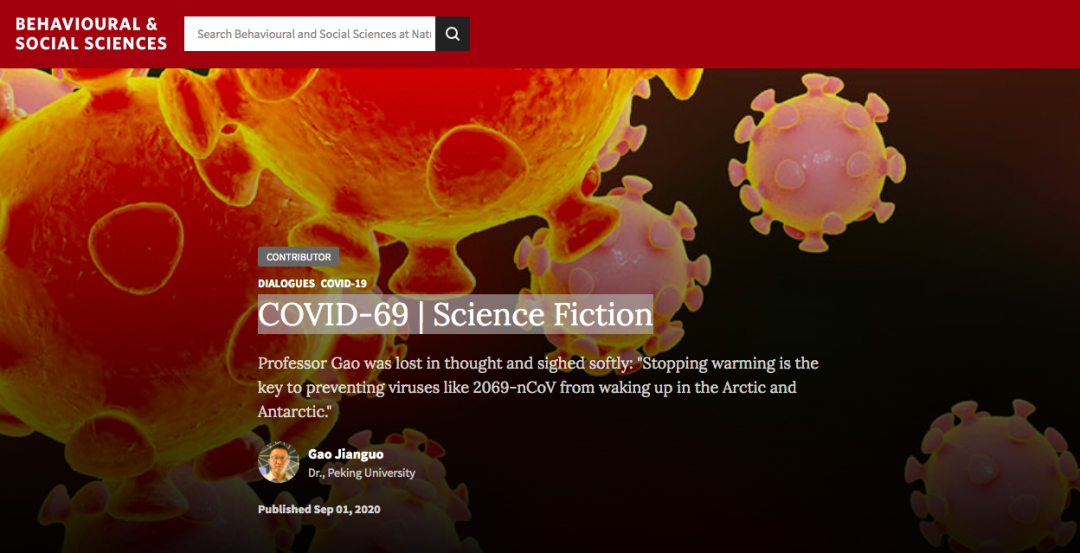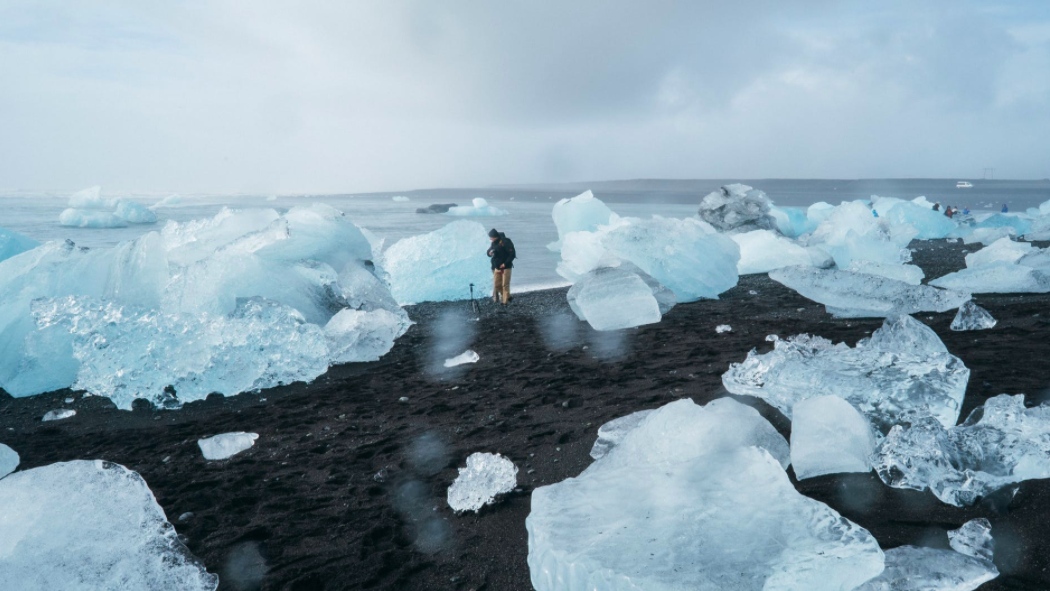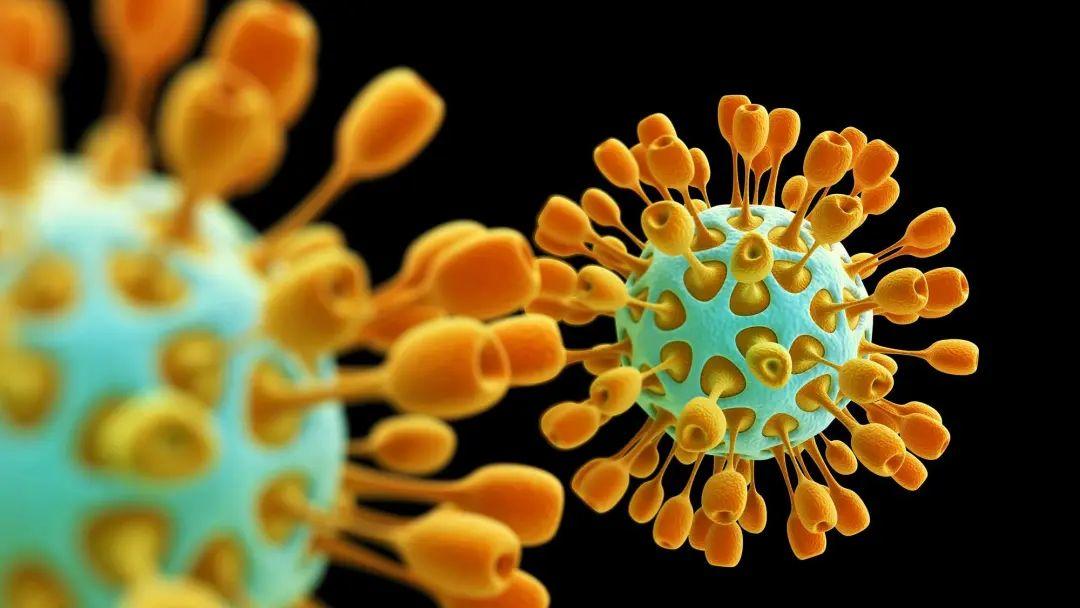
Illustration credit: Science Photo Library
若干年后,如今把人类社会搅得天翻地覆的新冠大流行卷土重来是怎样的一副景象……想必那时的科技更为发达,抵抗病毒的能力得到了很大的提升,又可能遭遇哪些恼人难题?作者高建国以此为背景写了一篇颇有深意的科幻小说,我们从中可以看到某些“似曾相识”的细节,或许也会有所感悟。
原文题目:
COVID-69 | Science Ficti
原文地址:
https://socialsciences.nature.com/posts/covid-69-science-fiction
2069年9月6号,高乔致 (George Gao) 教授正在他的生物学实验室焦急地等待他孙女高梅尔 (May Gao) 的基因组测序结果,现在是新冠病毒全球大流行的高峰期,教授十分急切地知道May的基因组是否含有新型冠状病毒 (2069-nCoV) 的易感基因。
“滴,滴,滴”三声之后,高教授迅速冲向电脑前,查看May的测序结果,“4号染色体,阴性。”“9号染色体,阴性。”“18号染色体,阴性。”“太好了,没有易感基因NGWs,May不具有易感2069-nCoV的基因或体质,她基本上是安全的。”顿时,等在一旁的George的家人欢呼起来。
自从上次May出现发烧症状以来,全家都在祈祷之中,大家都在担心May是否感染了2069-nCoV。而据目前全球500万人的流行病学数据,感染2069-nCoV的致死率高达10%,远高于半个世纪前的2019-nCoV。
高教授在过去的几个月一直与伦敦、纽约、东京、新德里、墨尔本和南极中国科学城 (Antarctic Chinese Science Town) 的同事密切交流着全球流行病学数据分析的结果,一个越来越凸显的事实是,这次2069-nCoV只会感染4号、9号和18号的名为“对气候变暖不敏感的基因 (Non-sensitive to Global Warming,NGWs) ”。拥有NGWs的人的特质是对全球变暖漠不关心,不会考虑当下的行为对未来造成的后果。据George估测,目前整个人类的10%拥有这类基因,即10亿人易感2069-nCoV。
可能受到基因测序结果的鼓舞,May的精神状态逐渐好转,她好奇地看着爷爷熟练地操作各种数据分析软件,问道:“爷爷,我们什么时候才能去放风筝呀?”
“现在还不行,北京也不过封城2个月,还不知道什么时候才能解封呢!”
“那什么时候才能解封啊?我好想去伦敦看机器人秀。呃,但我的同学怎么都在说这次的病毒是UK病毒啊,我又不想去了,这是真的吗?爷爷。”
“这次感染2069-nCoV的第一例确实是英国病人,但我们不能说它是’英国病毒’。。像这次病毒,它本来是沉睡在北极圈永久冻土里的,但40年前北极的夏天就开始是无冰的了,科学家估计以后每个秋天北极都不会有冰。当冰雪融化后,病毒就会苏醒。”
“那为什么这次那么严重啊?我的美国和英国的小伙伴几乎快崩溃了,完全受不了这种封锁与隔离啊!他/她们也非常不喜欢戴口罩。”
“我也是前几天刚得到消息。这次的病毒是多组分病毒 (multipartite viruses),一旦侵染人体就会自行分解21个组分,包括蛋白质外壳、RNA链,每个组分在不同类型的人体细胞悄无声息地复制,即不会引起任何不适或染病症状;当侵染人体细胞达到一半时,21个组分就会迅速在人体内组装有活性的病毒,发生大面积感染,从轻微的呼吸困难症状到窒息而死,仅仅需要短短的10小时。”
“爷爷,别讲了,我好怕,这怎么像我们课本里的一个小说呢,小说难道不都是假的吗?”
“宝贝,但这次是真的。纽约和新德里已经成为人间炼狱了……”
George随手关掉了北京警方发来的纽约和新德里骚乱和暴动的影像。
“难道真的要死掉1亿个人吗?我们能做些什么呢?”
高教授陷入了沉思,轻轻叹气道:“阻止气候变暖是防止像2069-nCoV这类病毒从南极和北极苏醒的关键。”
“我听老师说,可以通过基因编辑的方式改变人的基因,这样人就不会感染了呀;如果我们帮助易感的人去掉NGWs不就可以了吗?”
George欣慰了看了一眼May,这个小姑娘虽然比他小了80岁,但一点也不缺乏智慧。
“是的,这是个好主意,这是我们科学家商讨的一个有效方案,在有效疫苗问世之前的一个可能方案。”高教授不是很坚定地回答道。
“那为什么不去做呢?”May略显兴奋,快速地眨了眨她的大眼睛。
“修饰人的整个基因组太贵,大多数普通老百姓负担不起;并且非常耗时,至少要1-3年的时间;而这个病毒的潜伏期是3个月,当6月份在伦敦发现第一例病人时,其实整个人类都已经暴露于’病毒雨’下了。因此我们面临的困境是,即使修饰好了基因,但也很可能等不到发挥功效的时候。”
“更重要的是,这些拥有NGWs的人压根不喜欢科学,他/她们往往对技术怀有本能的警戒心。如美国前总统特不靠II就被一种北极诺如病毒 (noroviruses) 严重感染过,那是2059年的事情了,那时你还没有出生。”高教授继续解释道。
“那我们能不能在这次疫情结束的时候把NGWs都修改好呢,这样我们就再也不怕这种病毒了。”May对这个想法信心满满,有点兴奋地喊道。
“可是,孩子,这个陆地上有100多万种导致人畜共患疾病的病毒,而在南极和北极则有23万种未知的病毒正在苏醒。我们修饰好了一个基因,保不准新的病毒会喜欢上另外一个基因;而人类整个基因组也不过有2.3万个编码蛋白的基因,难道我们要把人类所有的基因都修改掉?”
高教授对这个疯狂的想法有点匪夷所思,如果把人的所有的基因都修改掉,那时的人还是人吗?高教授想起了他的同事黄教授忍痛放归女儿Yuna到海洋的一幕。
“不行,绝对不行!”George自言自语。“惟一的出路是我们与病毒共存,善待我们的地球,善待地球上的每种生命形态!”这时,George听到了一个来自远方的声音——“地球能满足人类的需要,但满足不了人类的贪婪。”
May有点不高兴了,貌似由于不能挽救全人类的生命而闷闷不乐。
然而,这次May通过与爷爷的聊天学到了新的知识,认识到气候行动的重要性。她决定在下个月把挽救人类的想法通过联合国的云平台分享给全世界的同龄小朋友。
嗯,题目就叫“现在行动,拯救人类未来和你最爱的人!”
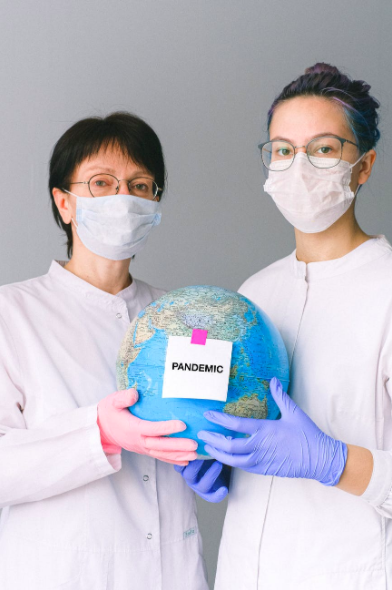
说明:本小说基于已经发表的经过同行评审的研究论文或其它可信的资料。想了解更多可阅读以下参考文献: (1000 Genomes Project Consortium, 2010; Andersen et al., 2020; Van Assche et al., 2019; Baker et al., 2019; Barr et al., 2013; Carroll et al., 2018; Cavicchioli et al., 2019; Chin et al., 2020; Dighe, 2020; Emanuel, 2005; Forster et al., 2020; Gardner & Wordley, 2019; Goldenberg, 2001; Gregory et al., 2019; Guan et al., 2020; Heidt, 2020; Hoffmann et al., 2020; Jones et al., 2008; Kaiser, 2020; Kernbauer et al., 2014; Kim et al., 2019; Kissler et al., 2020; Kurane, 2010; Laanto et al., 2017; Legendre et al., 2014, 2015; Li et al., 2020; Lin et al., 2003; Liu et al., 2020; Mao et al., 2016; Mirsaeidi et al., 2016; Moniruzzaman et al., 2020; Nguyen et al., 2020; Patricola & Wehner, 2018; Post et al., 2019; Reche et al., 2018; Ripple et al., 2017; Roets & Van Hiel, 2011; Sachidanandam et al., 2001; Schulz et al., 2020; Setti et al., 2020; Shu, 2020; Skov et al., 2020; Tisza et al., 2020; VanWormer et al., 2019; Wang & Overland, 2012; Winarski et al., 2019; Wölfel et al., 2020; Wu et al., 2016; G. Zhang et al., 2020; X. Zhang, 2020; Zhao et al., 2020). 其它的“硬科学”知识包括,决定O血型(该血型是万能供血者(universal donor),意味着利他精神(altruism))的基因是位于9号染色体上的ABO基因,而9号染色体,与4 (CLOCK)和18号(KATNAL2)染色体上的基因分别表征人格特点—宜人性和尽责性。
1000 Genomes Project Consortium. (2010). A map of human genome variation from population-scale sequencing. Nature, 467(7319), 1061–73. https://doi.org/10.1038/nature09534
Andersen, K. G., Rambaut, A., Lipkin, W. I., Holmes, E. C., & Garry, R. F. (2020). The proximal origin of SARS-CoV-2. Nature Medicine, 26(4), 450–452. https://doi.org/10.1038/s41591-020-0820-9
Van Assche, J., Roets, A., Van Hiel, A., & Dhont, K. (2019). Diverse Reactions to Ethnic Diversity: The Role of Individual Differences in Authoritarianism. Current Directions in Psychological Science, 28(6), 523–527. https://doi.org/10.1177/0963721419857769
Baker, R. E., Mahmud, A. S., Wagner, C. E., Yang, W., Pitzer, V. E., Viboud, C., et al. (2019). Epidemic dynamics of respiratory syncytial virus in current and future climates. Nature Communications, 10(1), 5512. https://doi.org/10.1038/s41467-019-13562-y
Barr, J. J., Auro, R., Furlan, M., Whiteson, K. L., Erb, M. L., Pogliano, J., et al. (2013). Bacteriophage adhering to mucus provide a non-host-derived immunity. Proceedings of the National Academy of Sciences, 110(26), 10771–10776. https://doi.org/10.1073/pnas.1305923110
Carroll, D., Daszak, P., Wolfe, N. D., Gao, G. F., Morel, C. M., Morzaria, S., et al. (2018). The Global Virome Project. Science, 359(6378), 872–874. https://doi.org/10.1126/science.aap7463
Cavicchioli, R., Ripple, W. J., Timmis, K. N., Azam, F., Bakken, L. R., Baylis, M., et al. (2019). Scientists’ warning to humanity: microorganisms and climate change. Nature Reviews Microbiology, 17(9), 569–586. https://doi.org/10.1038/s41579-019-0222-5
Chin, A. W. H., Chu, J. T. S., Perera, M. R. A., Hui, K. P. Y., Yen, H.-L., Chan, M. C. W., et al. (2020). Stability of SARS-CoV-2 in different environmental conditions. The Lancet Microbe. https://doi.org/10.1016/S2666-5247(20)30003-3
Dighe, G. (2020). Violet in love. Nature. https://doi.org/10.1038/d41586-020-00850-7
Emanuel, K. (2005). Increasing destructiveness of tropical cyclones over the past 30 years. Nature, 436(7051), 686–688. https://doi.org/10.1038/nature03906
Forster, P., Forster, L., Renfrew, C., & Forster, M. (2020). Phylogenetic network analysis of SARS-CoV-2 genomes. Proceedings of the National Academy of Sciences. https://doi.org/10.1073/pnas.2004999117
Gardner, C. J., & Wordley, C. F. R. (2019). Scientists must act on our own warnings to humanity. Nature Ecology & Evolution, 3(9), 1271–1272. https://doi.org/10.1038/s41559-019-0979-y
Goldenberg, S. B. (2001). The Recent Increase in Atlantic Hurricane Activity: Causes and Implications. Science, 293(5529), 474–479. https://doi.org/10.1126/science.1060040
Gregory, A. C., Zayed, A. A., Conceição-Neto, N., Temperton, B., Bolduc, B., Alberti, A., et al. (2019). Marine DNA Viral Macro- and Microdiversity from Pole to Pole. Cell, 177(5), 1109–1123. https://doi.org/10.1016/j.cell.2019.03.040
Guan, W., Ni, Z., Hu, Y., Liang, W., Ou, C., He, J., et al. (2020). Clinical Characteristics of Coronavirus Disease 2019 in China. New England Journal of Medicine, NEJMoa2002032. https://doi.org/10.1056/NEJMoa2002032
Heidt, A. (2020). Giant viruses aren’t alive. So why have they stolen genes essential for life? Science. https://doi.org/10.1126/science.abc2958
Hoffmann, M., Kleine-Weber, H., Schroeder, S., Krüger, N., Herrler, T., Erichsen, S., et al. (2020). SARS-CoV-2 Cell Entry Depends on ACE2 and TMPRSS2 and Is Blocked by a Clinically Proven Protease Inhibitor. Cell. https://doi.org/10.1016/j.cell.2020.02.052
Jones, K. E., Patel, N. G., Levy, M. A., Storeygard, A., Balk, D., Gittleman, J. L., & Daszak, P. (2008). Global trends in emerging infectious diseases. Nature, 451(7181), 990–993. https://doi.org/10.1038/nature06536
Kaiser, J. (2020). How sick will the coronavirus make you? The answer may be in your genes. Science. https://doi.org/10.1126/science.abb9192
Kernbauer, E., Ding, Y., & Cadwell, K. (2014). An enteric virus can replace the beneficial function of commensal bacteria. Nature, 516(7529), 94–98. https://doi.org/10.1038/nature13960
Kim, S., Park, H., Gruszewski, H. A., Schmale, D. G., & Jung, S. (2019). Vortex-induced dispersal of a plant pathogen by raindrop impact. Proceedings of the National Academy of Sciences, 116(11), 4917–4922. https://doi.org/10.1073/pnas.1820318116
Kissler, S. M., Tedijanto, C., Goldstein, E., Grad, Y. H., & Lipsitch, M. (2020). Projecting the transmission dynamics of SARS-CoV-2 through the postpandemic period. Science, eabb5793. https://doi.org/10.1126/science.abb5793
Kurane, I. (2010). The Effect of Global Warming on Infectious Diseases. Osong Public Health and Research Perspectives, 1(1), 4–9. https://doi.org/10.1016/j.phrp.2010.12.004
Laanto, E., Mäntynen, S., De Colibus, L., Marjakangas, J., Gillum, A., Stuart, D. I., et al. (2017). Virus found in a boreal lake links ssDNA and dsDNA viruses. Proceedings of the National Academy of Sciences, 114(31), 8378–8383. https://doi.org/10.1073/pnas.1703834114
Legendre, M., Bartoli, J., Shmakova, L., Jeudy, S., Labadie, K., Adrait, A., et al. (2014). Thirty-thousand-year-old distant relative of giant icosahedral DNA viruses with a pandoravirus morphology. Proceedings of the National Academy of Sciences, 111(11), 4274–4279. https://doi.org/10.1073/pnas.1320670111
Legendre, M., Lartigue, A., Bertaux, L., Jeudy, S., Bartoli, J., Lescot, M., et al. (2015). In-depth study of Mollivirus sibericum, a new 30,000-y-old giant virus infecting Acanthamoeba. Proceedings of the National Academy of Sciences, 112(38), E5327–E5335. https://doi.org/10.1073/pnas.1510795112
Li, Q., Guan, X., Wu, P., Wang, X., Zhou, L., Tong, Y., et al. (2020). Early Transmission Dynamics in Wuhan, China, of Novel Coronavirus–Infected Pneumonia. New England Journal of Medicine, 382(13), 1199–1207. https://doi.org/10.1056/NEJMoa2001316
Lin, M., Tseng, H.-K., Trejaut, J. A., Lee, H.-L., Loo, J.-H., Chu, C.-C., et al. (2003). Association of HLA class I with severe acute respiratory syndrome coronavirus infection. BMC Medical Genetics, 4(1), 9. https://doi.org/10.1186/1471-2350-4-9
Liu, Q., Tan, Z.-M., Sun, J., Hou, Y., Fu, C., & Wu, Z. (2020). Changing rapid weather variability increases influenza epidemic risk in a warming climate. Environmental Research Letters, 15(4), 044004. https://doi.org/10.1088/1748-9326/ab70bc
Mao, Q., Ciotlos, S., Zhang, R. Y., Ball, M. P., Chin, R., Carnevali, P., et al. (2016). The whole genome sequences and experimentally phased haplotypes of over 100 personal genomes. GigaScience, 5(1), 42. https://doi.org/10.1186/s13742-016-0148-z
Mirsaeidi, M., Motahari, H., Taghizadeh Khamesi, M., Sharifi, A., Campos, M., & Schraufnagel, D. E. (2016). Climate Change and Respiratory Infections. Annals of the American Thoracic Society, 13(8), 1223–1230. https://doi.org/10.1513/AnnalsATS.201511-729PS
Moniruzzaman, M., Martinez-Gutierrez, C. A., Weinheimer, A. R., & Aylward, F. O. (2020). Dynamic genome evolution and complex virocell metabolism of globally-distributed giant viruses. Nature Communications, 11(1), 1710. https://doi.org/10.1038/s41467-020-15507-2
Nguyen, A., David, J. K., Maden, S. K., Wood, M. A., Weeder, B. R., Nellore, A., & Thompson, R. F. (2020). Human leukocyte antigen susceptibility map for SARS-CoV-2. Journal of Virology. https://doi.org/10.1128/JVI.00510-20
Patricola, C. M., & Wehner, M. F. (2018). Anthropogenic influences on major tropical cyclone events. Nature, 563(7731), 339–346. https://doi.org/10.1038/s41586-018-0673-2
Post, E., Alley, R. B., Christensen, T. R., Macias-Fauria, M., Forbes, B. C., Gooseff, M. N., et al. (2019). The polar regions in a 2°C warmer world. Science Advances, 5(12), eaaw9883. https://doi.org/10.1126/sciadv.aaw9883
Reche, I., D’Orta, G., Mladenov, N., Winget, D. M., & Suttle, C. A. (2018). Deposition rates of viruses and bacteria above the atmospheric boundary layer. The ISME Journal, 12(4), 1154–1162. https://doi.org/10.1038/s41396-017-0042-4
Ripple, W. J., Wolf, C., Newsome, T. M., Galetti, M., Alamgir, M., Crist, E., et al. (2017). World Scientists’ Warning to Humanity: A Second Notice. BioScience, 67(12), 1026–1028. https://doi.org/10.1093/biosci/bix125
Roets, A., & Van Hiel, A. (2011). Allport’s Prejudiced Personality Today. Current Directions in Psychological Science, 20(6), 349–354. https://doi.org/10.1177/0963721411424894
Sachidanandam, R., Weissman, D., Schmidt, S. C., Kakol, J. M., Stein, L. D., Marth, G., et al. (2001). A map of human genome sequence variation containing 1.42 million single nucleotide polymorphisms. Nature, 409(6822), 928–33. https://doi.org/10.1038/35057149
Schulz, F., Roux, S., Paez-Espino, D., Jungbluth, S., Walsh, D. A., Denef, V. J., et al. (2020). Giant virus diversity and host interactions through global metagenomics. Nature, 578(7795), 432–436. https://doi.org/10.1038/s41586-020-1957-x
Setti, L., Passarini, F., Gennaro, G. De, Baribieri, P., Perrone, M. G., Massimo Borelli, J., et al. (2020). SARS-Cov-2 RNA Found on Particulate Matter of Bergamo in Northern Italy: First Preliminary Evidence. MedRxiv. https://doi.org/10.1101/2020.04.15.20065995
Shu, L. (2020). Avoid stigmatizing names for 2019 novel coronavirus. Nature, 578(7795), 363–363. https://doi.org/10.1038/d41586-020-00458-x
Skov, L., Coll Macià, M., Sveinbjörnsson, G., Mafessoni, F., Lucotte, E. A., Einarsdóttir, M. S., et al. (2020). The nature of Neanderthal introgression revealed by 27,566 Icelandic genomes. Nature. https://doi.org/10.1038/s41586-020-2225-9
Tisza, M. J., Pastrana, D. V, Welch, N. L., Stewart, B., Peretti, A., Starrett, G. J., et al. (2020). Discovery of several thousand highly diverse circular DNA viruses. ELife, 9. https://doi.org/10.7554/eLife.51971
VanWormer, E., Mazet, J. A. K., Hall, A., Gill, V. A., Boveng, P. L., London, J. M., et al. (2019). Viral emergence in marine mammals in the North Pacific may be linked to Arctic sea ice reduction. Scientific Reports, 9(1), 15569. https://doi.org/10.1038/s41598-019-51699-4
Wang, M., & Overland, J. E. (2012). A sea ice free summer Arctic within 30 years: An update from CMIP5 models. Geophysical Research Letters, 39(18), L18501. https://doi.org/10.1029/2012GL052868
Winarski, K. L., Tang, J., Klenow, L., Lee, J., Coyle, E. M., Manischewitz, J., et al. (2019). Antibody-dependent enhancement of influenza disease promoted by increase in hemagglutinin stem flexibility and virus fusion kinetics. Proceedings of the National Academy of Sciences, 116(30), 15194–15199. https://doi.org/10.1073/pnas.1821317116
Wölfel, R., Corman, V. M., Guggemos, W., Seilmaier, M., Zange, S., Müller, M. A., et al. (2020). Virological assessment of hospitalized patients with COVID-2019. Nature. https://doi.org/10.1038/s41586-020-2196-x
Wu, X., Lu, Y., Zhou, S., Chen, L., & Xu, B. (2016). Impact of climate change on human infectious diseases: Empirical evidence and human adaptation. Environment International, 86, 14–23. https://doi.org/10.1016/j.envint.2015.09.007
Zhang, G., Murakami, H., Knutson, T. R., Mizuta, R., & Yoshida, K. (2020). Tropical cyclone motion in a changing climate. Science Advances, 6(17), eaaz7610. https://doi.org/10.1126/sciadv.aaz7610
Zhang, X. (2020). Review of genome-wide association study. Chinese Science Bulletin, 65(8), 671–683. https://doi.org/10.1360/TB-2019-0063
Zhao, J., Yang, Y., Huang, H., Li, D., Gu, D., Lu, X., et al. (2020). Relationship between the ABO Blood Group and the COVID-19 Susceptibility. MedRxiv. https://doi.org/10.1101/2020.03.11.20031096
THE STORY BEHIND: COVID-69
Jianguo Gao reveals the inspiration behind his latest tale.
There are three exciting scientific signs of progress and one teleplay that inspire me in writing this fiction. One is the unprecedented knowledge in human genomes. We got to know such details of our genetics and identified many crucial genes related to physical, physiological and mental health. The second inspiration was that the virologists have discovered mega-viruses habited in the Arctic and Qinghai-Tibet Plateau that we still knew little about them. The third is also inspired by virologists who found multipartite viruses. The fourth inspiration is a marvelous teleplay Westworld released by HBO in which the human’s future shown as a metaphor. The recent COVID-19 pandemic is indeed everyone’s care, but as an ecologist, I am worrying that our future world is extremely vulnerable to unknown virus outbreak which might be intensified by global warming. For example, there are more and more hurricanes under a warming climate which could accelerate global virus cycle.
Jianguo Gao is an ecologist who focuses on plant ecophysiology, ecosystem ecology and plant evolution. After receiving a Ph.D. from CAS (Guangzhou) he moved to Shanghai and Beijing where he turned into an independent research scientist. He is totally a science geek and loves cultural diversity and biodiversity.
本文英文版发表在Nature Research Behavioural and Social Sciences Community上:
https://socialsciences.nature.com/posts/covid-69-science-fiction
集智斑图收录来自 Nature、Science 等顶刊及arXiv预印本网站的最新论文,包括复杂系统、网络科学、计算社会科学等研究方向。每天持续更新,扫码即可获取:
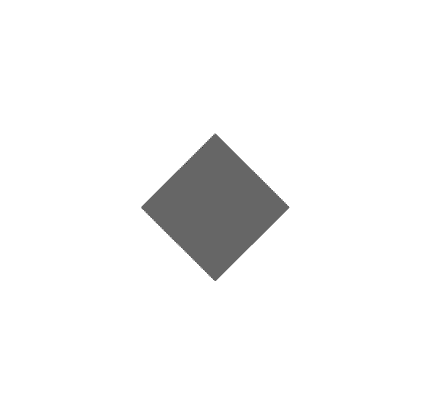
集智俱乐部QQ群|877391004
商务合作及投稿转载|swarma@swarma.org
搜索公众号:集智俱乐部
加入“没有围墙的研究所”
让苹果砸得更猛烈些吧!
👇点击“阅读原文”,查阅英文版吧

